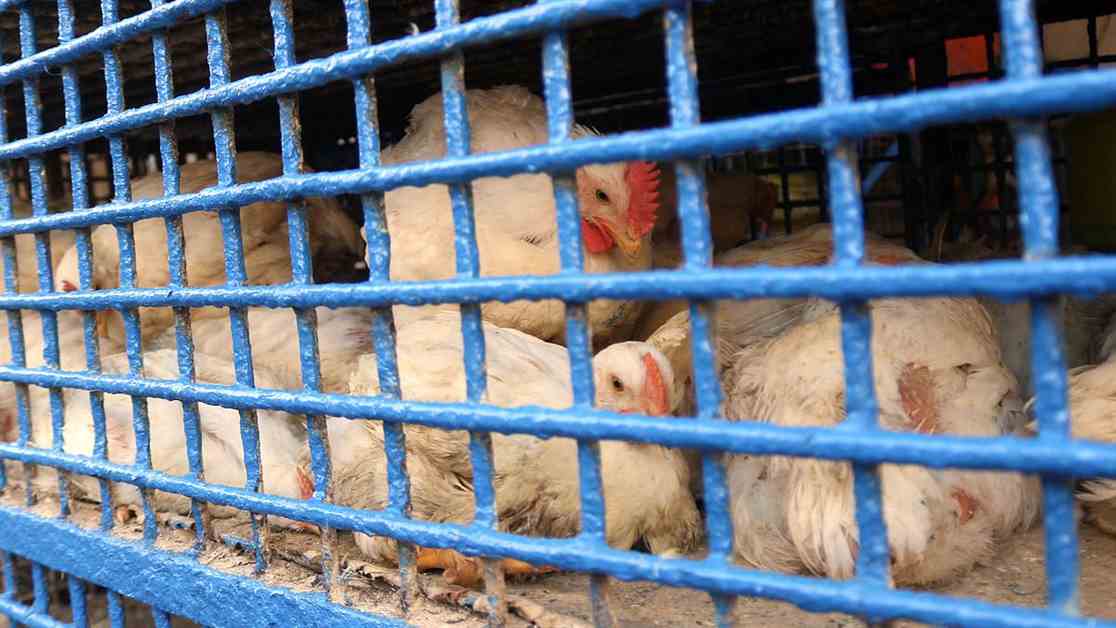WHO Warns New Strain of Bird Flu Has Jumped to People
A new strain of bird flu has jumped to humans in an event that has ‘potential for high public health impact’, the World Health Organization has warned. Officials say a 59-year-old man in Mexico died after battling a seven-day illness in which he suffered fever, shortness of breath, diarrhea, and nausea.
Tests showed the man, who suffered multiple underlying conditions, was infected with a strain of bird flu called **H5N2**, marking the first time this type has ever been detected in humans. Officials said any case of new bird flu strains spilling into humans risked an outbreak, but that in this case the risk was ‘low’ as there was no evidence of onward transmission.
The strain differs from the **H5N1** bird flu that is currently tearing through dairy herds in the US and has already sickened three dairy farm workers. The patient, from Mexico City, became unwell on April 17, but initially tried to treat his symptoms at home. A week later, however, and after symptoms worsened, the patient went to the hospital — but died later that same day from ‘complications of his condition’.
PCR tests carried out on April 24 revealed he had been infected with a flu virus, and later it was confirmed that the patient had **H5N2**. He was also reported to have been bedridden for three weeks before contracting the infection. It was not clear where the patient caught the virus or whether they had spread it to others. He had no connection to farmland or poultry — which has been the case for the three patients infected with the original strain.
Officials said 17 people at the Mexico City hospital where he was treated and twelve neighbors — including seven who had signs of illness — all tested negative for the virus. Blood tests are now being carried out to screen for antibodies against **H5N2**, which would indicate a previous infection. Officials also noted that several flocks in the area had recently tested positive for **H5N2**, although it was not clear whether these were linked to the patient.
Dr. William ‘Bill’ Schaffner, an infectious diseases expert at Vanderbilt University in Tennessee, said the case was concerning but that it was likely that increasing cases are being detected due to a rise in the number of tests. ‘We are looking very hard for bird flu infections, as a consequence of **H5N1**, around the world,’ he told DailyMail.com.
‘We are also looking now in a much more sophisticated fashion than we were able to do even five to ten years ago. So, I think we will begin to find the odd infection that we hadn’t anticipated but that probably was happening in the past but going unrecorded.’
He added that he was ‘surprised’ the infection had been detected in someone with no contact with poultry, suggesting the individual may have caught the disease from a close contact — although this will need to be confirmed with tests.
**H5N2** was first detected in poultry in the 1990s and has also been detected in other animals including pigs — which are known for infecting humans with their diseases. This strain is not the type responsible for current widespread outbreaks across the animal population of the US. It is **H5N1**, which has been detected in everything from foxes to raccoons, skunks, cows, seals, and deer.
Last week, experts raised concerns after a third American tested positive for **H5N1**, and was found to have novel symptoms including a cough. This means the virus may be able to spread easily to others via infected particles in the air. In the other two **H5N1** cases, the symptoms mostly affected the patients’ eyes — including watery discharge and bleeding. A total of 82 dairy herds have now tested positive for bird flu, with Idaho reporting the highest number.


